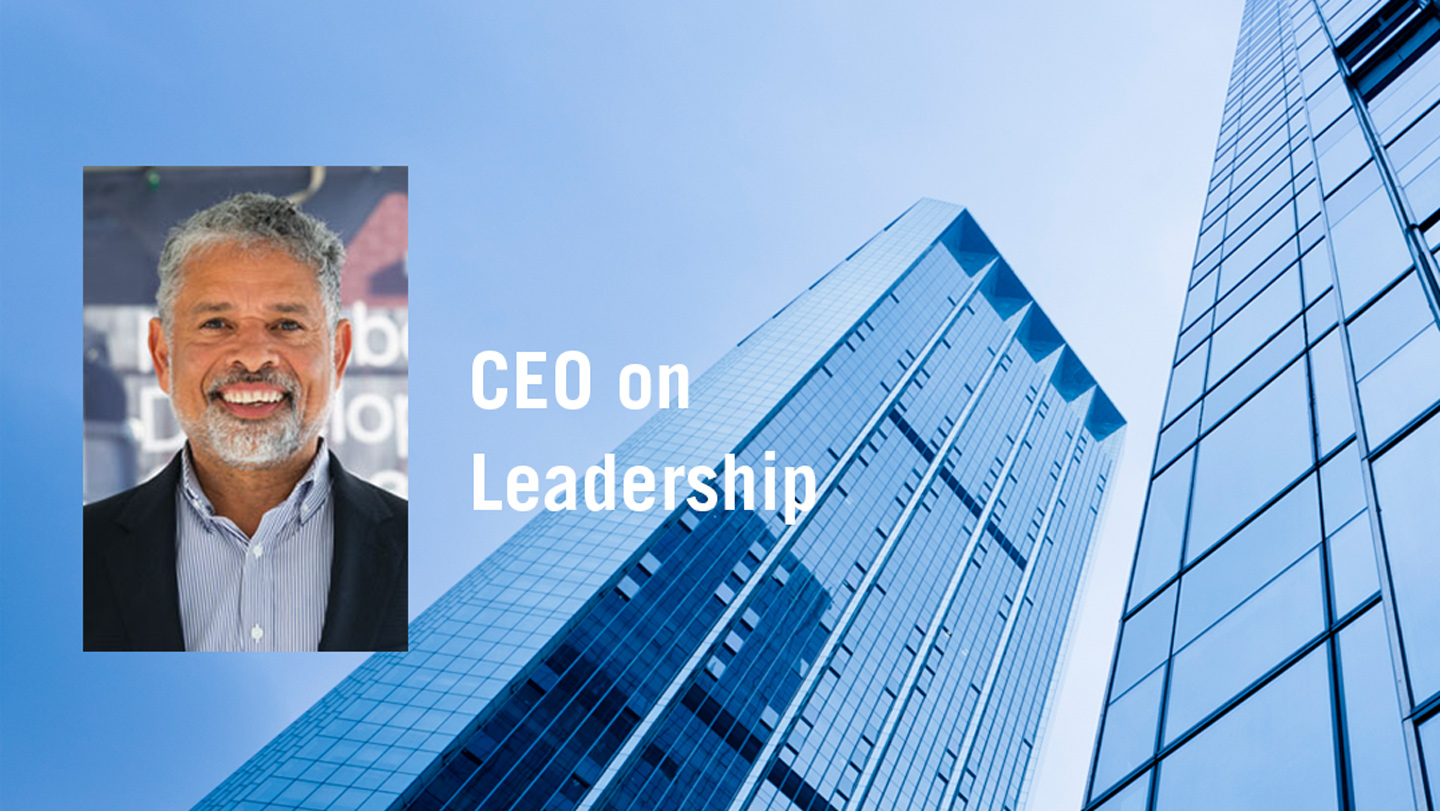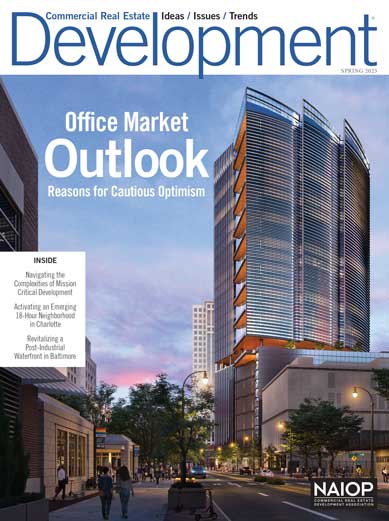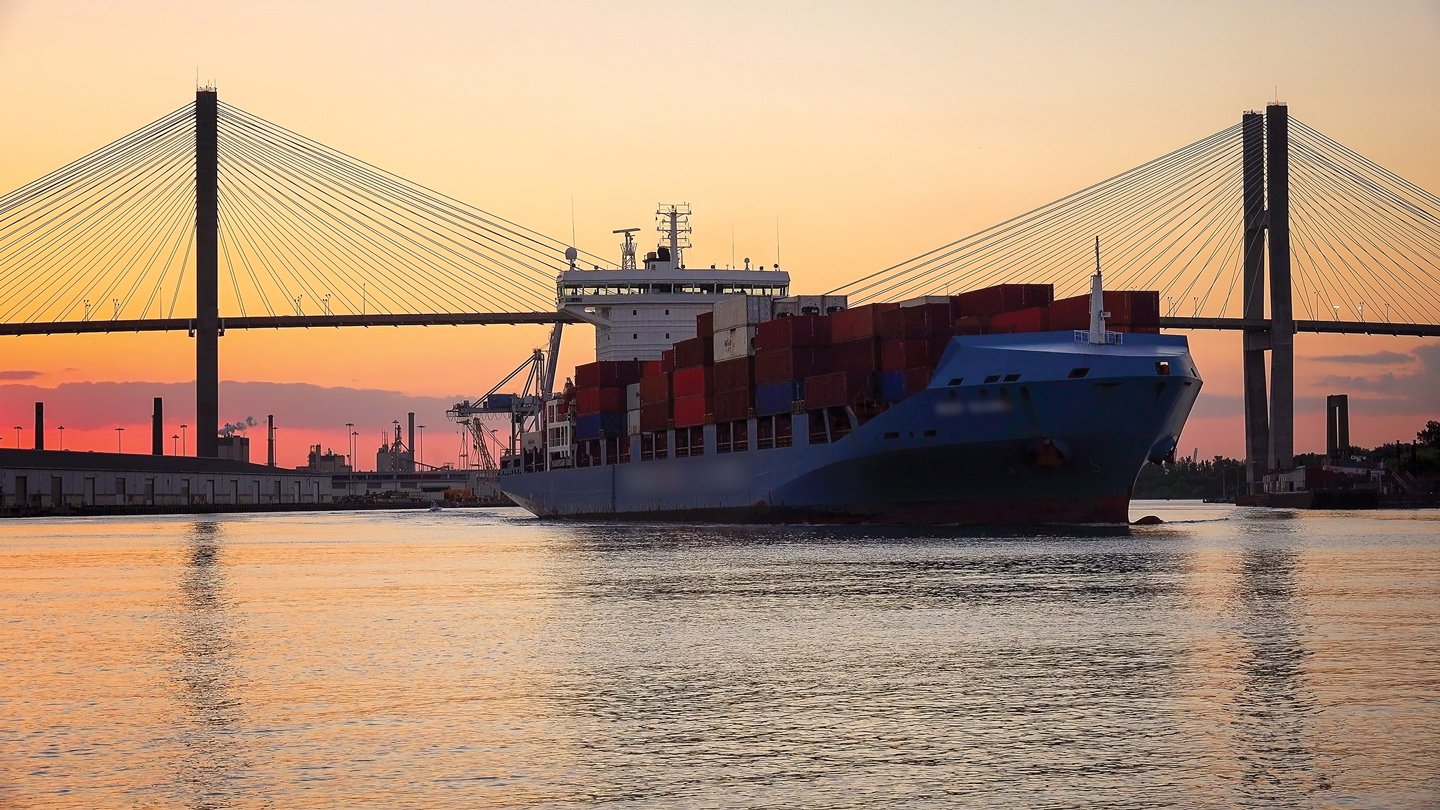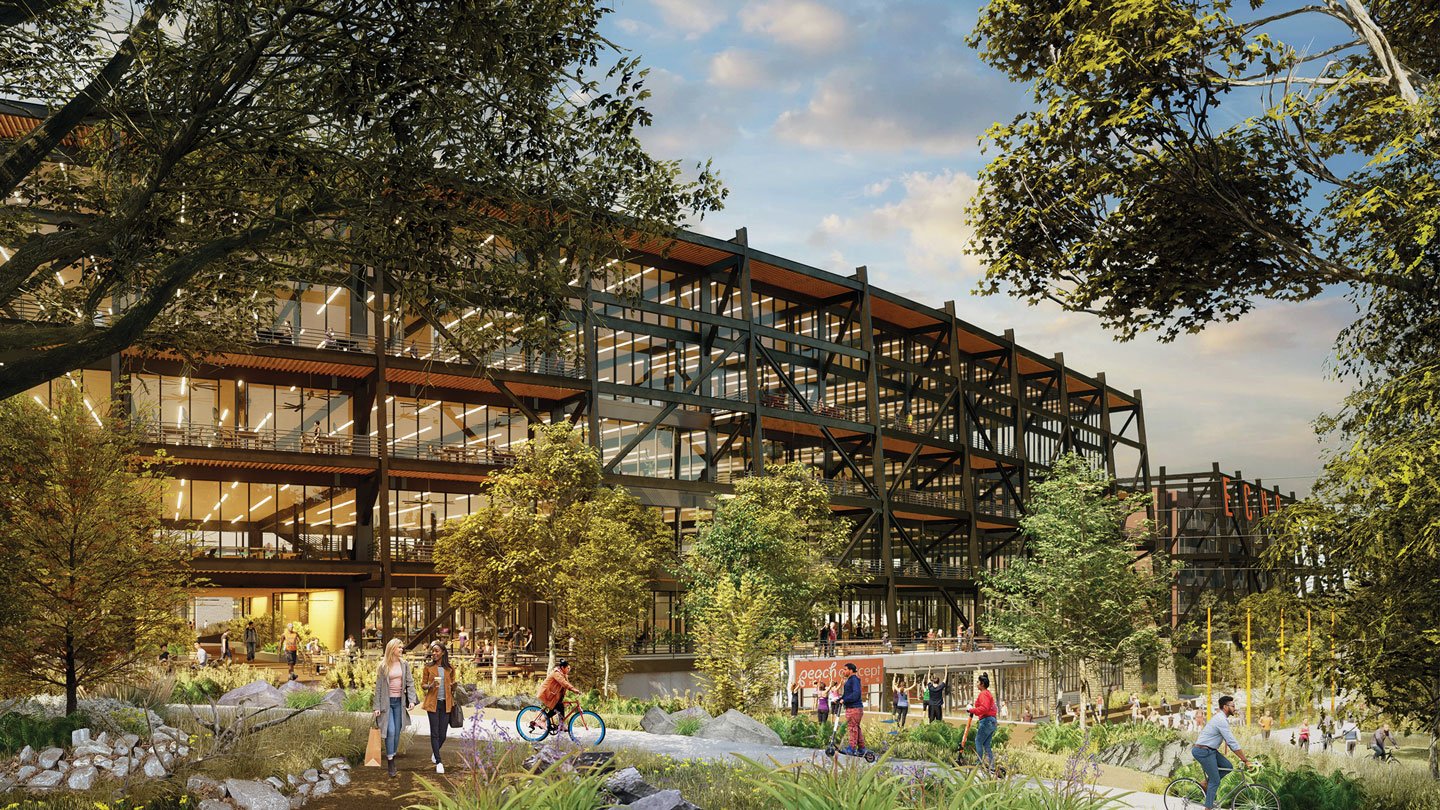An adaptive reuse project in the Washington, D.C., suburbs show the potential for converting old office space into apartments.
Spring 2022 Issue
How Industrial Projects Can Spur Economic Growth
By: Gary HornA large tire-storage facility in a small Indiana town offers lessons for developers on how to work with communities.
Going Big: Large-Format Multilevel Industrial Buildings
By: Eric AderneckThese facilities can be important in areas with a constrained supply of land.
Cutting-edge Research That Has an Impact
The NAIOP Research Foundation's annual report highlights the relevant studies, activities and deep dives to come in 2022 and beyond.
Download the Spring 2022 Issue of Development
Download a PDF version of the Spring 2022 Issue of Development.
Must-Read Articles

Construction Sites Build a Circular Economy

Real Estate Crowdfunding: Solid Growth, But Challenges Remain

Demography is Destiny for Commercial Real Estate

Construction Firms Foresee More Projects, More Problems

Solera: Where Suburban Form Meets Urban Function

Sub-Surface Recharge Systems Require Careful Planning

CEO on Leadership: Adrian G. Washington, Founder and CEO, Neighborhood Development Co.

The Assembly Builds on the Past
RELATED RESEARCH AND PUBLICATIONS
Office Space Demand Forecast, Fourth Quarter 2025
From Static to Strategic: AI’s Role in Next-Generation Industrial Real Estate
- Report,
- Technology,
- ...
Industrial Space Demand Forecast, Third Quarter 2025
PERSPECTIVES
CEO on Leadership: Adrian G. Washington, Founder and CEO, Neighborhood Development Co.
From the Editor: Two Steps Forward, One Step Back
Getting to Know New Chair Jeff Milanaik
NAIOP Chapter Merit Awards Salute Outstanding Efforts and Individuals
The Most Valuable Asset: Expanding the CRE Talent Pool
ADDITIONAL ARTICLES
U.S. Ports Anchor Growing Demand for Industrial Space in Select Markets
New & Noteworthy
Transit-Oriented Housing Fills a Need in the Boston Region
Navigating Construction Risk in Uncertain Times
The New Office is Outdoors
ARCHIVED ISSUES
View All Archived Issues Summer 2025 Issue
Summer 2025 Issue
Development’s summer 2025 issue explores experiential retail and the brick-and-mortar resurgence. Also featured: a modern warehouse campus in Toronto that honors its manufacturing heritage; a coalition of Oregon real estate organizations working to revitalize downtown Portland; and the creative capital stack strategy behind a mixed-use project in West Baltimore.
 Spring 2025 Issue
Spring 2025 Issue
The spring 2025 issue offers insights about where the office market might be heading over the coming year, explores the complexities of mission critical development, and provides detailed looks at two transformative mixed-use projects: The Bowl at Ballantyne in Charlotte and Baltimore Peninsula in Maryland.
 Winter 2024/2025 Issue
Winter 2024/2025 Issue
Development magazine’s winter issue delves into the evolving uses of artificial intelligence in the commercial real estate industry, from lease management and building operations to portfolio assessment and data analysis.














